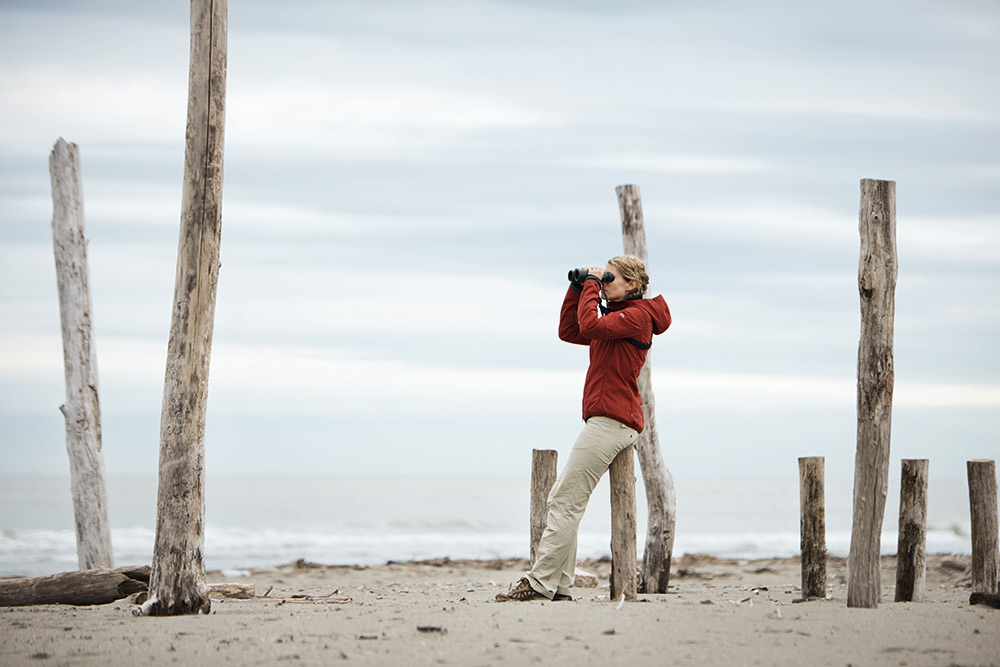- Call us: 01444 237070
- Contact Us
- Stores
- Sign In / Register
-
- Back
- Used Cameras
- Used Accessories
- Used Lenses
- Used Video
- Used Film Equipment
- Used Stock Alert
- Used Blank Test
- Sell or Part Exchange
- Used Clearance
- Recently Added Used Equipment
- Park Picks
- All Used Black Friday Deals
- Faulty
- Trade-In
- Blog
- New in
- Call us
- Contact us
- Stores
- Sign in
- Categories
- Tips & Inspiration
- Reviews
- News
- Events
- Features
- Buying Guides
- Competitions
Best Binoculars for Nature Viewing
If you’re considering investing in a pair of binoculars, monocular or spotting scope to enjoy nature observation this guide is for you. Discover everything from the best binoculars for nature viewing, bird watching, wildlife scoping and more.
You can also enjoy our video reviews of the latest Zeiss SFL Binocular review video (2023). Our best buy binoculars table will help you choose from what can feel like a minefield of choices in order to find the perfect optics for any budget. Read more about the world’s best known optical brands including ZEISS, Swarovski, Nikon, Leica, Olympus, Canon, Steiner, Viking and Pentax.
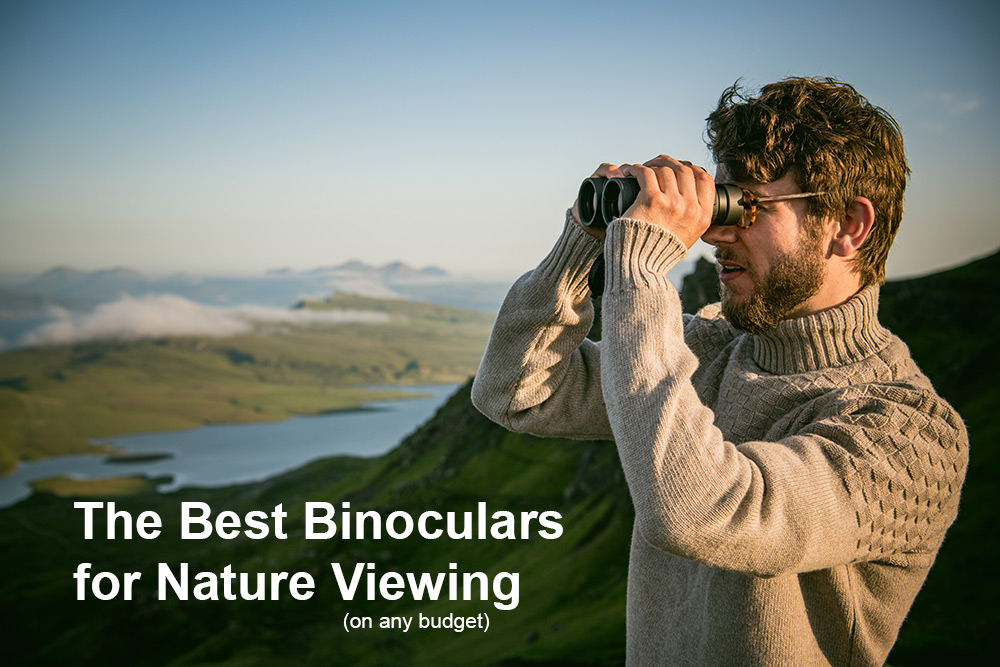
Table of contents
- Why use binoculars for nature viewing?
- When is the best time of year for nature viewing?
- Tips for how to choose binoculars for beginners
- Which binoculars are best for bird watching?
- Best buy binoculars and optics table (updated 2025)
- New binoculars
- Zeiss SFL Binocular review video
- Zeiss Secacam Trail Cameras First Look
- Tips for using binoculars in the field
- Nature and Wildlife Blog Posts
- Wildlife observation resources
DTI Image
Why use binoculars for nature viewing?
Many of us enjoy outdoor pursuits, country walks and hikes to enjoy wildlife, landscape photography or simply to enjoy some time from our daily routine. A pair of binoculars or a spotting scope adds a new level of enjoyment to outdoor activities, enabling us to ‘zoom in on real life’ and observe animals in their natural habitat, with far greater detail than we are able with the naked eye.
Binocular technology brings a range of features to enhance our viewing experience, with lightweight and portable designs, which are ergonomically made for easy carrying and prolonged use. We can see much further into the distance with a suitable magnification to discover timid wildlife, and watch birds or other animals go about their business, as well as view crystal clear details of subjects from afar.
Photographers are known to bring a pair of lightweight binoculars in order to scope subjects and compositions, being easier and lighter than using an unwieldy super telephoto lens. We can also discover distant routes across the landscape, find places to set-up a wildlife camera or discover which direction to head for the action.
You can also find binoculars with a close minimum focus distance to enlarge details on nearer subjects, observing in a similar way to a macro lens. Digiscoping is also becoming increasingly popular, with accessories designed to mount a camera or smartphone to your optics.
These enable you to photograph images and record video of distant nature, the night sky including the moon and planets, through a scope or monocular at impressive magnifications. A monocular provides the ultimate low weight solution for distant viewing, favoured by ultralight hikers and outdoorsman.
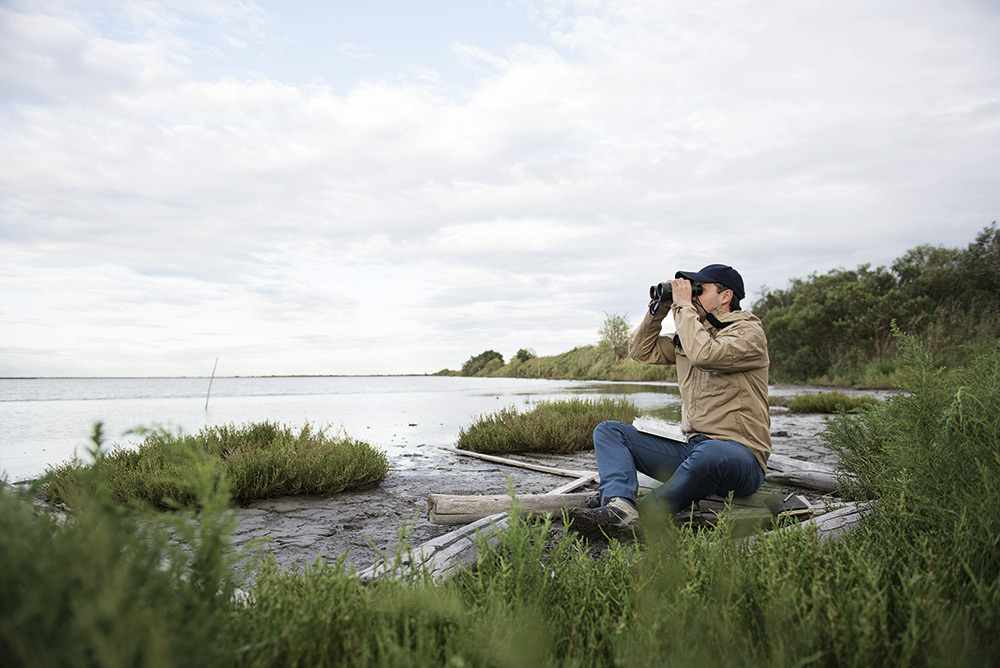
When is the best time of year for nature viewing?
If you’re in the UK every season offers unique highlights for viewing and experiencing nature in its element. Naturally we’ll be most comfortable during the warmest months from April through to September, which coincides with much of the natural world being at its most active, but colder seasons also provide plenty to observe.
Spring
During March, April and May nature springs into action and we’ll hear the dawn chorus as birds are nesting, swifts and bats return to our shores and mammals are born as food sources rejuvenate for the year ahead. Spring is a wonderful time to get closer to nature, with so much to experience and enjoy. It’s a particularly busy time for nature photographers who capture wildlife and landscapes, with insects, foliage and colours returning to a previously monotone landscape. Daffodils, anemones and bluebells mark spring’s progress with deer, rabbits and squirrels seen throughout forest locations. Spring is also a favoured time of year for stargazing with binoculars or a scope. Discover the best astronomy tools and photography gear, which offer a higher magnification, for viewing celestial objects and the Milky Way, which can be observed through to July.
Summer
The summer months provide a time of plenty which sees juvenile birds and mammals growing and discovering their role in nature. Dragonflies, butterflies and wildflowers are abundant as days get warmer and longer, which provides us with plenty of opportunity for viewing nature. Remember to bring some shade, sunscreen and a Walkstool Comfort seat to while away the hours comfortably. Look out for lizards, frogs, hawk-moths and other creatures in the undergrowth during this fabulous time of year.
Autumn
As the days cool and grow shorter, wildlife remains active with incredible spectacles to enjoy. You can view the deer rut from a safer distance, and other mammals become increasingly active during their quest for mating and food. It’s a great time of year to keep an eye out for hedgehogs, squirrels and foxes during a time of increased activity. Mushrooms start appearing as migrations begin, with moths and warblers amongst those leaving the UK, all against a spectacular backdrop of autumn colour. It’s worth noting that an optic with a larger aperture gathers more light, which is recommended for twilight observation of these kinds of creatures. It’s the perfect time to try out new autumn photography ideas and understand how a thermal imaging camera works in order to watch the deer ruts.
Winter
Despite the cold, dark and shorter days, winter provides plenty of opportunities for us to enjoy quiet nature viewing. Some of the most incredible starling murmurations can be seen between December and March, along with mountain hares, owls, woodpecker, squirrels and of course Robin red breast to name just a few. If you can bear to get out during these cold and wet months you’ll be rewarded by plenty of natural scenes to witness with fewer people around to disturb the natural environment.
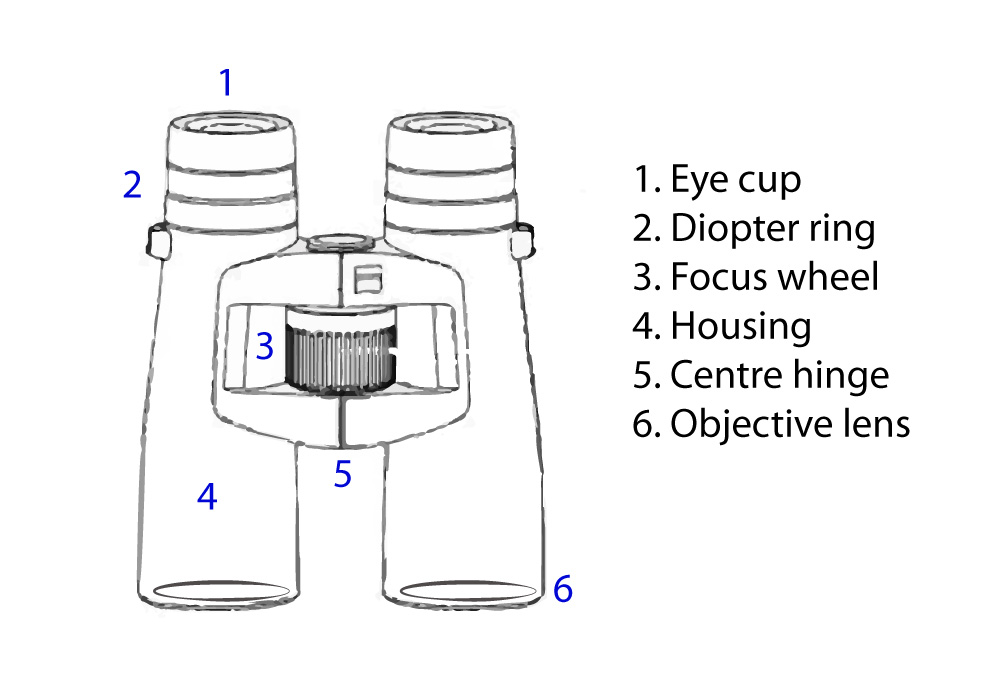
Tips for how to choose binoculars for beginners
Binoculars have particularly technical features and naming conventions, with lots of brands to choose from, which can be overwhelming if you’re a beginner to using binoculars. These tips will help you to understand what the names mean and which features could suit your style of viewing when buying a pair. In some regards choosing binoculars follows a similar process as buying cameras lenses, with many manufactures designing both optics and lenses due to their similarities.
- The first and most important decision to make is what you want to view with binoculars, whether that’s near or distant subjects, during the daytime, in low light or nighttime. For general nature viewing and daytime observation on hikes and walks entry-level binoculars are perfect. On the other hand if you observe subjects in low light, or want them to appear close-up with high clarity and detail, a more advanced pair of binoculars will perform better.
- This leads to magnification, which forms part of the name in all binoculars. For example, an 8x42 binocular has an 8x magnification of the naked eye, (while 42 is the diameter of the objective lenses). Typically binocular magnification ranges from 6x or 7x through to 12x or 15x magnification. Although higher magnification gets you closer to a subject, it’s also harder to hold steady. This is why some models include built-in optical stabilisation, and some viewers attach their optic to a monopod or tripod with a suitable tripod adapter, which can be found in our binocular accessories. For closer and larger subjects choose a lower magnification, and a higher magnification for more distant subjects, including astro, the moon and Milky Way. Another consideration is that a higher magnification will reduce your field of view, which means you’ll need to move them around more when spotting subjects on the periphery of your vision. A wider field of view gives a more general view of the landscape without having to move as much.
- The size of the objectives (front lens aperture) makes a difference to the size and weight of binoculars, as well as how much light they will gather. Choosing the size of the objective diameter can be informed by whether you will be viewing subjects in low light during sunrise or sunset for example, as well as how lightweight you want the binocular to be. Larger objectives provide clearer, more detailed viewing, but will be heavier.
- Image quality is also dictated by special lens elements and coatings included in the optical design. Manufacturers use ED glass (Extra-Low Dispersion Glass), or Fluoride glass and others in premium optics. These reduce colour fringing and other image errors, often referred to as aberrations or Chromatic Aberration. As with camera lenses you may notice a drop in quality, or Spherical Aberration towards the edges of the image with lower spec models. Lens coatings are employed to reduce internal reflections, which in turn increases light transmission. Ideally we want the most light to pass through the binocular to ensure we have the brightest and clearest image possible.
- For the clearest viewing choose binoculars with inert gas filling, such as Nitrogen or Argon. This helps with outdoor use as glass becomes opaque with changes in pressure and moisture in the air. Gas filling will therefore give you the best fog-free viewing in most situations.
- Knowing the exit pupil helps to inform you about the relative brightness you can achieve with any pair of binocular. The diameter of the exit pupil is the size of the hole the light passes through, which then hits your eye pupil. The wider the better during low light, whereas daytime viewing can be narrower, as our pupils narrow in brighter light. Anywhere from 2-3mm for daytime viewing and around 7mm for low light is a good solution.
- Ergonomics and overall design plays a part in the comfort, useability and length of time you can comfortably view with binoculars before they become uncomfortable. If possible, choose a versatile model which allows for a degree of adjustment, both through adjustable eye cups, focusing and the width of spacing using a centre hinge. The materials used to create the outer casing play a considerable role in the overall quality you’ll enjoy, with optics using magnesium, aluminium and polycarbonates. Typically the highest quality models are made with all-metal components and feel great when being used.
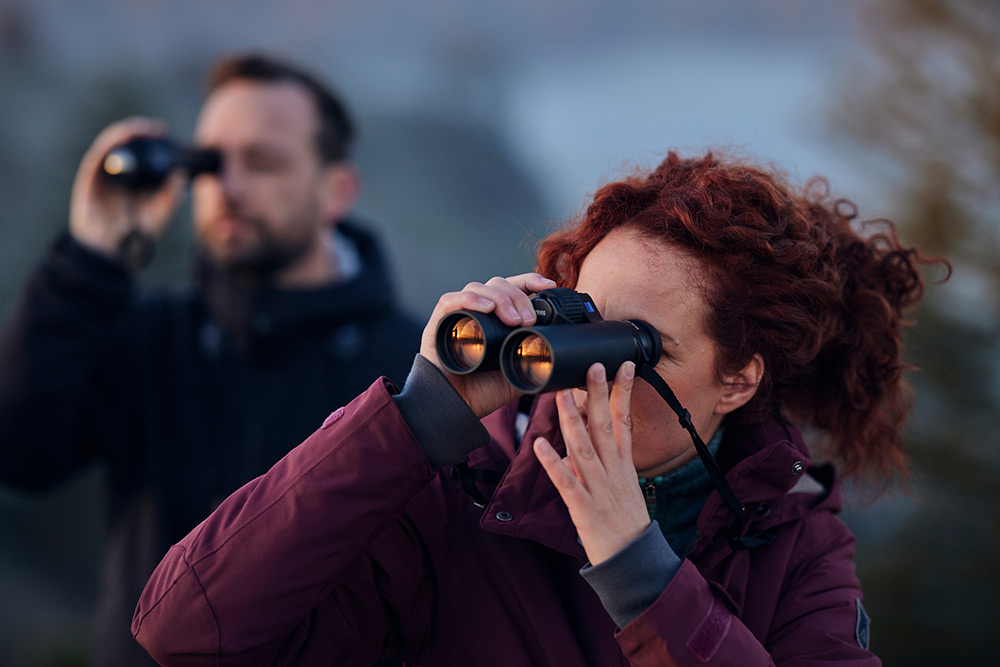
Which binoculars are best for bird watching?
A good binocular enhances bird watching by allowing for more detailed observations, from greater distances. Viewing from further away means you are less likely to disturb birds and can watch for longer while observing their natural behaviour. Bird photographers will often use binoculars to locate and get nearer to their subject, without having to wield long lenses, gimbals, tripods and other equipment they bring.
As described with beginner binocular tips, choosing binoculars for bird watching primarily comes down to the most appropriate magnification and objective diameter for your subject and budget. Bird watching binoculars benefit from the inclusion of special elements which enhance the image, in order to observe small birds from a greater distance.
After choosing the magnification and objective size, other deciding factors include whether you intend to watch birds at a location where your equipment may get wet such as a reservoir, water-based nature reserve or during inclement weather. Waterproof binoculars, rugged construction and fog-free lenses are great features to look for in any of these situations. Many choose their equipment based on being lightweight for longer walks. It’s also essential to choose binoculars, which include a diopter to adjust fine focus on your subjects.
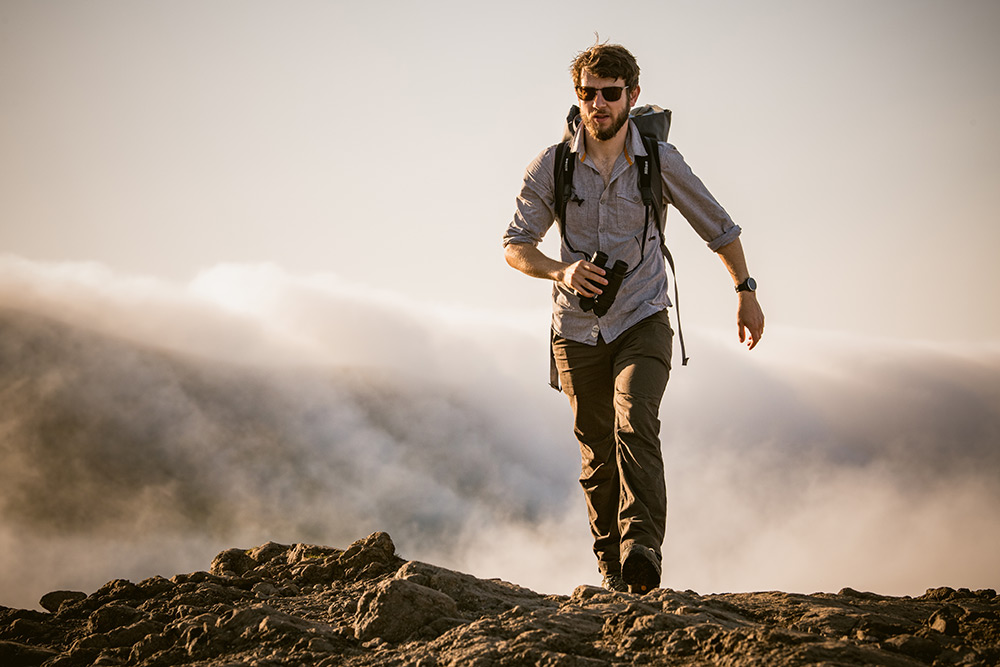
The best binoculars in 2025
We’ve rounded-up some of the most popular optics, binoculars and scopes for nature viewing in this best buy binoculars comparison. Any of these models will provide an excellent viewing experience with various options, which are suitable for a range of applications and budgets.
|
Model |
RRP |
Key features |
Weight |
|
£1,119.00 |
|
1,300g |
|
|
£3695.00 |
|
1090g |
|
|
£1065.00 |
|
715g |
|
|
£809.00 |
|
640g |
|
|
£399.00 |
|
680g |
|
|
£499.00 |
|
725g |
|
|
£2,800.00 |
|
1020g |
|
|
£169.00 |
|
600g |
|
|
£249.00 |
|
440g |
|
|
£739.00 |
|
786g |
|
|
£1,649.00 |
|
1015g |
|
|
£1,149.00 |
|
1,200 g |
|
|
£1,090.00 |
|
730g |
|
|
£155.00 |
|
315g |
|
|
£1,539.00 |
|
640g |
|
|
£510.00 |
|
255g |
|
|
£659.00 |
|
575g |
New binoculars
The following new binoculars have been added to our range in 2024 and 2025, offering the latest viewing technology for nature observation:
- ZEISS Secacam 3 Trail Camera
- ZEISS Conquest HDX 8x42 Binoculars
- ZEISS Conquest HDX 8x32 Binoculars
- ZEISS Conquest HDX 10x42 Binoculars
- Fujinon TS-X 14x40 Techno-Stabi Binoculars
- Leica TRINOVID 8x32 HD Binocular
- Swarovski 14x52 NL Pure Binoculars
- Swarovski 10x52 NL Pure Binoculars
- Swarovski AX Visio 10x32 Smart Binoculars
- Nikon Stabilised A19A0 10x25 S Binoculars
- Kite APC 14x50 Image Stabilised Li-ion Binoculars
- Hawke Endurance Laser Rangefinder 1500
- Hawke Laser Rangefinder 800
- Hawke Vantage Laser Rangefinder 900
Video reviews
Watch our collection of binocular, scope and thermal imaging camera reviews, which include the Zeiss SFL 30 Binoculars and Zeiss DTI 3/35 & DTI 3/25 Review, all of which were released in 2023.
Zeiss SFL 30 Binoculars Video Review | The Perfect Compact Binoculars?
Zeiss Secacam Trail Cameras | First Look Video Review
New ZEISS Trail Cameras
Adding to the range in January 2025, ZEISS launched the all-new ZEISS Secacam 3 Trail Camera. This model comes packed with upgrades compared to the 2023 cameras, including a new chipset for faster transmission and excellent image clarity in low light. It also adds a new LCD screen, integrated memory and USB-C file transfers, which all comes at a lower cost than the first generation Secacam 7 and Secacam 5.
Tips for using binoculars in the field
If you’re new to using binoculars out in the field observing nature these tips will help you set-up and get started for brilliant results.
- Attach the binocular’s neck strap to avoid hand-stress when not in use. Regardless of weight carrying a pair off binoculars for longer periods places strain on your hands which can be reduced by hanging them round your neck. You can also buy binocular cases and harnesses or straps to lighten the load and improve your carrying experience. The ZEISS Binocular Harness is a great example as it prevents neck strain and distributes weight across your shoulders.
- Time your time to achieve comfort and accurate focus. Adjust the overall width between the two barrels to suit your face width using the width adjustment dial in the centre. Once comfortable, use the focus wheel to get a subject in the distance sharp. You can then use a combination of focus wheel and diopter adjustment to get pin sharp details.
- To locate a bird or particular wildlife it’s good practice to remain stationary for a while. Once you’re settled, use your hearing to locate subjects. You’re far more likely to hear rustling or bird song before seeing anything. Look exactly in the direction of any noise, then bring your binoculars up to align with your eyes. You should begin to see the subject after some practice and patience. Try and note a landmark or object near where you’re looking so you can come back to it after looking elsewhere.
- We recommend regularly maintaining any optic with cleaning equipment such as the ZEISS Lens Cleaning Kit. This will keep the lenses clear and provide the best viewing experience without dirt, smudges and debris building up.
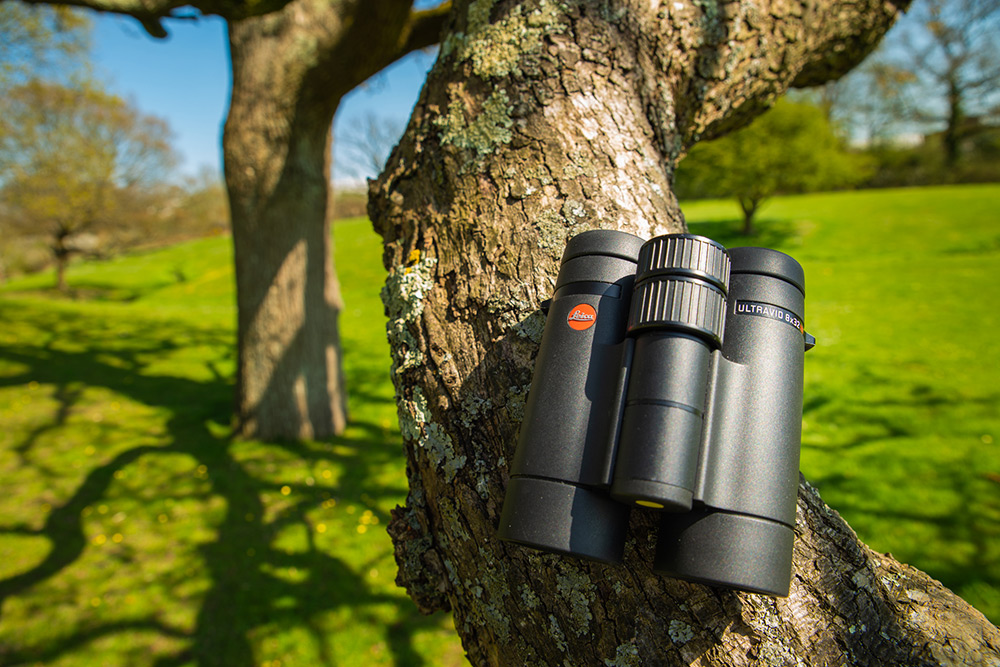
Nature and Wildlife Blog Posts
Park Cameras are fortunate to have wonderful customers and photography ambassadors contribute to our blog. We’ve published numerous wildlife and bird articles over the years which can inspire and teach us how to photograph wildlife and get the most out of viewing nature. These posts are sure to inspire you to get out into nature, so why not grab a cup of tea and take a moment to read some of these posts.
- How A Thermal Imaging Camera Works for observing wildlife subjects as light levels dip
- Park Cameras Adds Spypoint Trail Cameras
- Park Cameras Adds Pulsar Optics For Nature Observation
- World Nature Photography Awards is packed with inspiration from the natural world
- Photographing Local Wildlife Danny Green combines glorious photos of UK wildlife with tips and tricks for observation and composition
- Photographing African Wildlife demonstrates how you can use simple equipment to capture incredible moments
- Long Lens Landscape Photography With David Clapp teaches us how to observe distant subjects
- Essential Accessories For Wildlife Photography is a great read if you take pictures while observing nature
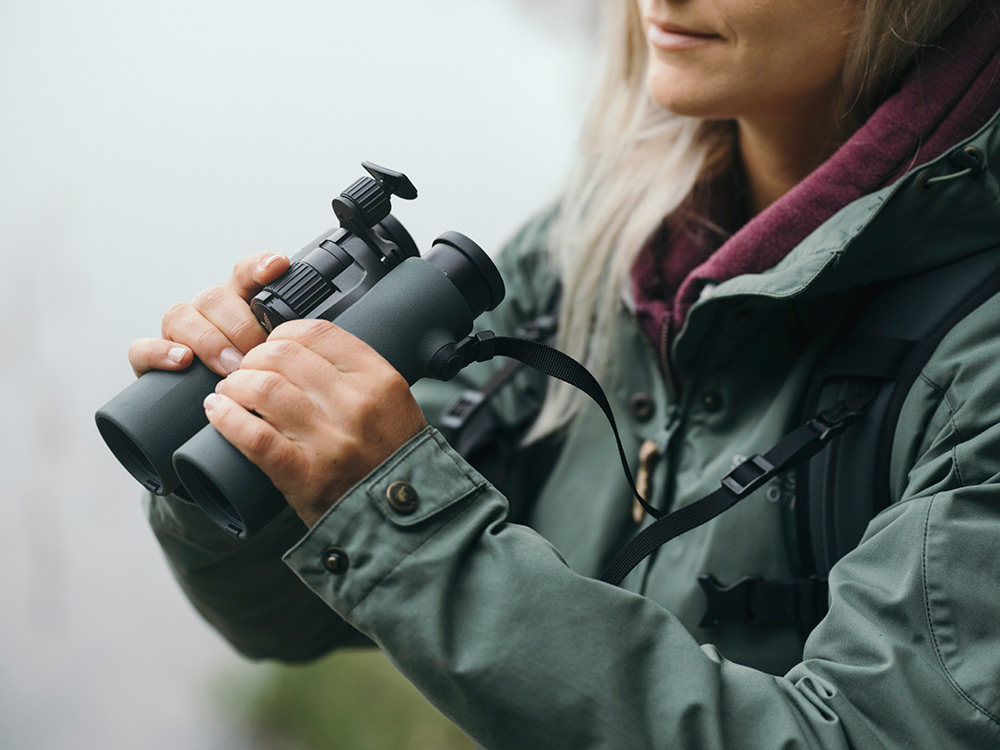
Wildlife observation resources
We’ve collated a list of external Wildlife observation resources to discover the best time to view wildlife, how you can get involved as well as inspiration to get us outside and enjoy the natural world.
- Nature's Calendar provides seasonal guides for viewing birds and is hosted by the RSPB
- The Woodland Trust hosts a national Calendar inviting participation for everyone to note observations and track climate change in the UK
- NatGeo Kids is a brilliant resource packed with activities and information for children to get involved with the natural world
- Where to see is a resource provided by Country File magazine with lots of information for where to observe and photograph nature throughout the UK
- Following the birdwatchers' code enables us all to enjoy seeing birds with a little common sense and good practice
The natural world around us provides unlimited benefits for our health and wellbeing as well as many hours of enjoyment simply observing. Whether you enjoy walks, hikes, sports or simply general outdoor activities, browse our range of binoculars from the most popular brands to find your perfect optic for nature viewing.
Share this post:
By Nick Dautlich on 09/03/2025
Nick Dautlich
Senior Content Writer and Product Reviewer
Nick Dautlich is the Senior Content Writer and Product Reviewer at Park Cameras, with over 15 years of photography experience. A Sony Imaging Professional and expert reviewer, Nick has worked with major brands such as Canon, Sony and Nikon. His work is also featured on Vanguard World UK’s website, Capture Landscapes, and Shutter Evolve. Nick’s photography includes National Trust projects and magazine covers and he is passionate about landscapes and storytelling. Nick also enjoys hiking and teaching his children about nature. Learn more on his profile page.

Trade in your old equipment
Fast and easy trade in service ensures your old gear is collected efficiently and you are paid quickly! It's very simple to trade in your unwanted photography gear. Just head over to our dedicated Sell or Part Exchange page, fill out the details, and we'll get back to you with an offer for your old gear. Take the cash, or put it towards the cost of your new gear. It's up to you! Find out more
sign up to the newsletter
Keep up to date on the latest photography news, events and offers. Sign up now

